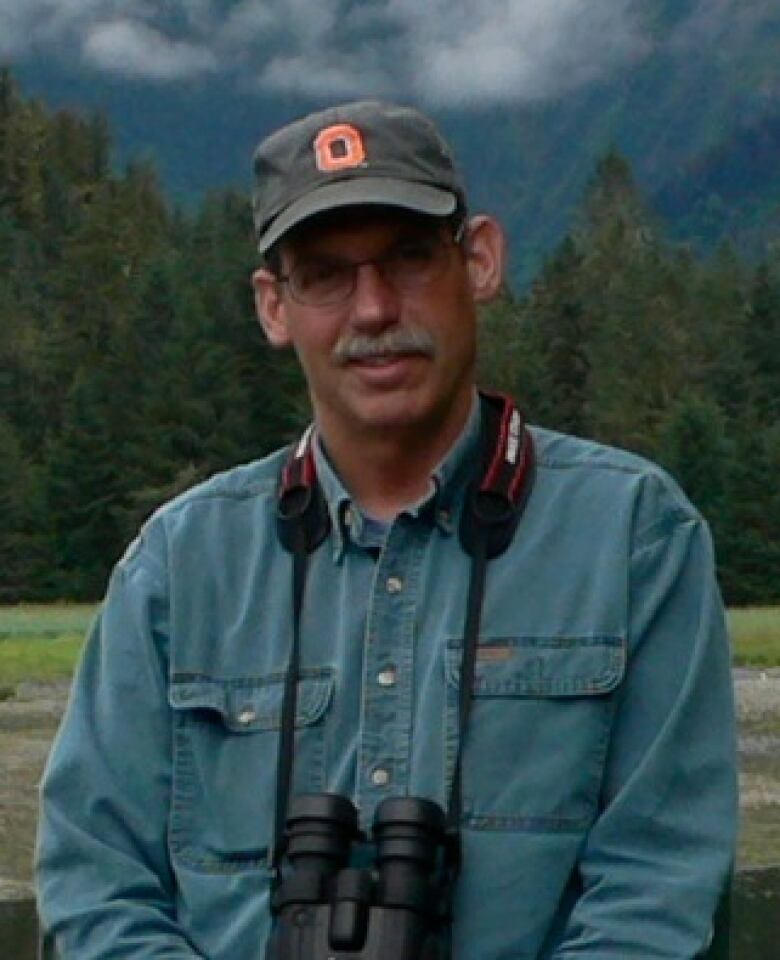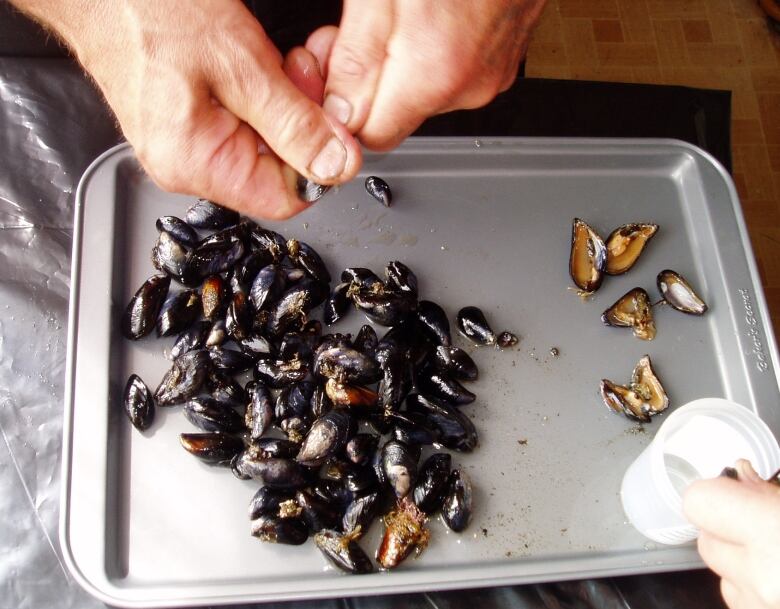High levels of paralytic shellfish poisoning found off Haines, Alaska
Scientist says some Yukoners are still harvesting mussels in Alaska: 'You're risking your life by doing that'

Gone are the days of poking along the Alaska shoreline at low tide, collecting fresh mussels and cooking them up over an open fire on the beach.
If you do that, as some Yukonershave,you're playing Russian roulette, says a scientist with the Aleutian Pribilof Islands Association.

Bruce Wright recently released a report on the levels of paralytic shellfish poisoning (PSP) off the coast of Haines, Alaska, and it's not good news.
He found shellfish with above-safe levels ofPSP at all of the sample sites. One location was off the charts, measuring 270 times Alaska's regulatory limit of80 microgramsper 100 grams.
"Which means that one mussel could probably kill you," Wright says.
I hear about folks coming down from the Yukon regularly still harvesting mussels and eating mussels. And I think that's super risky.- Bruce Wright, scientist
SomeYukoners still harvesting
Paralytic shellfish poisoning is found in bivalves like mussels, clams and oysters, where harmful algalblooms are present. The toxin can't be eliminated through cooking or any other means. Despite being also called"red tide," the colour of the tide is not indicative of its safety.
Commercially sold shellfish are inspected and regulated, but the State of Alaska advises people against eating recreationally harvested shellfish at any time of the year. Yet, Wright says public awareness about the riskof eating shellfish is surprisingly low,both in state and out.
"I hear about folks coming down from the Yukon regularly still harvesting mussels and eating mussels. And I think that's super risky," he says.
"In Haines and all along coastal Alaska ... you're risking your life by doing that."
In 2010, two people died of PSP in southeast Alaska.

That's when the severity of the issue came onto Wolf Riedl's radar. The Haines Junction man has been fishing in Alaska for 40 years.
"The Canadians that I know that fish down there and harvest, generally only harvest crabs or shrimp, they don't mess around with mussels or clams," he says.
Crabs, which eat shellfish, can also contain PSP, but it's isolated to their digestive tracks. Crabs can be safely eaten as long as they are cleaned before being cooked.
Riedl says most people avoid the crab entrails anyway, because they're"brown and gucky."
No'safe'beachesin Alaska
The State of Alaskadoes not have a public bulletin like inBC and other coastal areas in Canada where PSP is found.Fisheries and Oceans Canada posts PSP updates and beachclosure information on its website.
"I would love for the state to step up to bat and match the programs that are active now in Canada," says Wright.
Alaska ran a recreational shellfish pilot project in several communities that ended in June.CandiceBresslerwith the Alaska Department of Environmental Conservation says although the statewas testing shellfish from beaches often used by locals for subsistence, it did not certify beaches as safe.

"The nature of PSP prevents us from doing so; levels can change between adjacent beaches, or even with the tide cycles," she says.
There is a safe way to harvest shellfish, but it's time-consuming. It requires sending shellfishaway for sampling while storing the harvest in a fridge orfreezer until the results come back, weeks later. Wright says this is usually done as a community-wide coordination rather than by individuals.
Warm water means more PSP
Wrightexpects PSP numbers to get worse, as the Gulf of Alaska warms and harmful algal blooms become more frequent. Last summer, satellite imagery recorded the largest bloom ever seen in the Gulf of Alaska.
"It was pretty impressive and a little scary," he says.












_(720p).jpg)


 OFFICIAL HD MUSIC VIDEO.jpg)
.jpg)



























































































